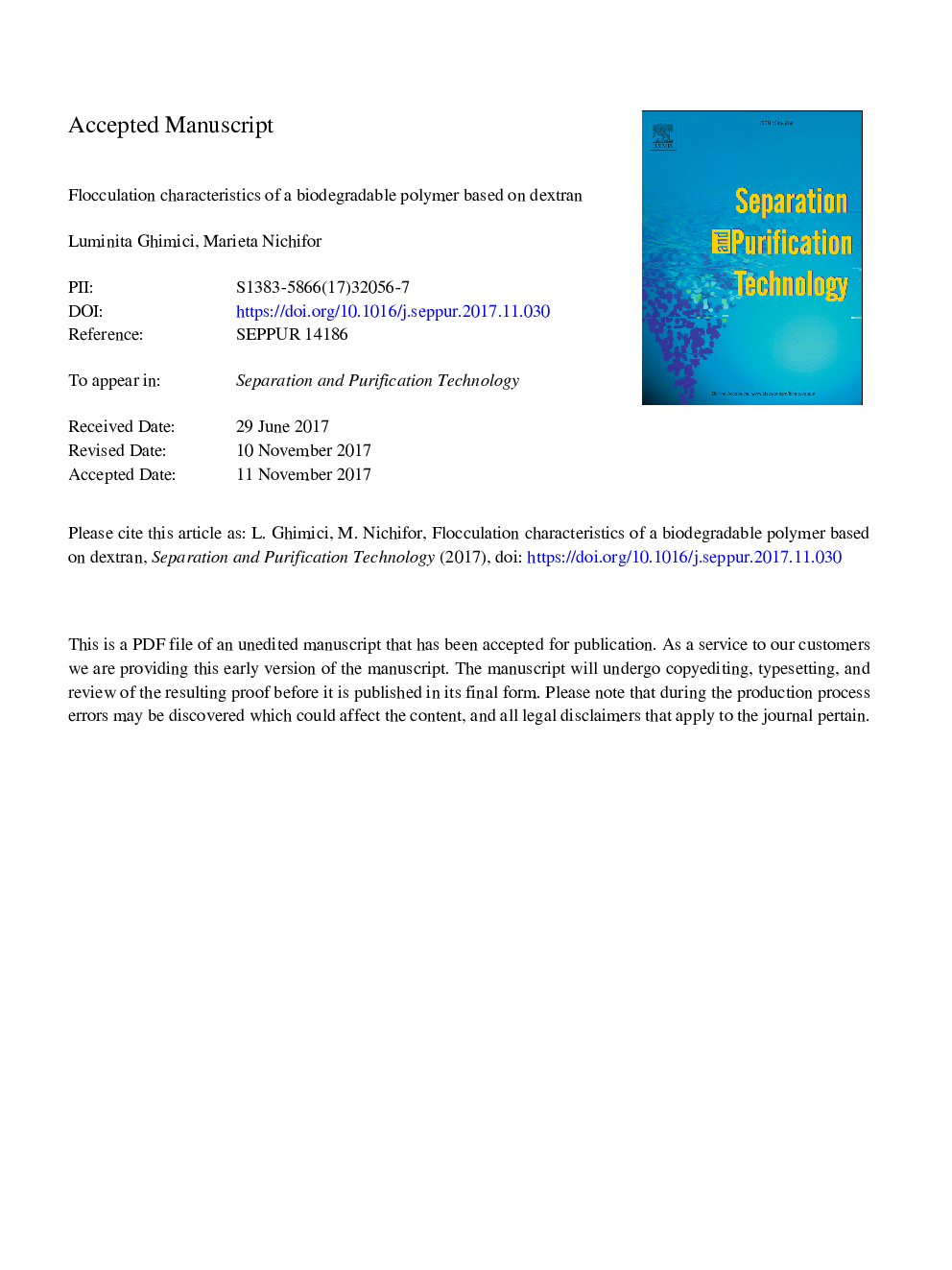| Article ID | Journal | Published Year | Pages | File Type |
|---|---|---|---|---|
| 7044055 | Separation and Purification Technology | 2018 | 30 Pages |
Abstract
The flocculation efficiency of a cationic polysaccharide with 1-(2-hydroxypropyl)-3-methyl imidazolium chloride groups attached to dextran (D40-MeIm36) was evaluated on synthetic wastewaters containing either inorganic particles (Zirconium silicate (kreutzonit), Kfeldspar, TiO2) or organic ones (pesticides (Decis) and (Dithane M45)). The effect of polymer dose, medium pH, its composition and contaminant concentration on the separation efficacy was followed by UV-Vis spectroscopy measurements. The interactions between D40-MeIm36 and inorganic particles led to maximum removal efficiency (of around 95%), irrespective of the medium pH and composition. The negative values of the zeta potential, at the optimum polymer doses, point to charge patch as mechanism for the particles flocculation. A good efficiency of D40-MeIm36 in separation of pesticides has been noticed; the maximum removal percent slightly increased with increasing pesticide concentration, namely, from 85% at c (v/v) = 0.01% to 92% - 94% for c (v/v) = 0.02% and 0.04% for Decis and from around 85% at câ¯=â¯0.1â¯g Lâ1 to 89% at câ¯=â¯0.2â¯g Lâ1 for Dithane M45. A minimum residual pesticide absorbance of about 10% has been recorded for both pesticides, at the established medium pH. Zeta potential and particle aggregates size data plead for the charge neutralization as the dominant mechanism for the flocculation of pesticide particles.
Related Topics
Physical Sciences and Engineering
Chemical Engineering
Filtration and Separation
Authors
Luminita Ghimici, Marieta Nichifor,
